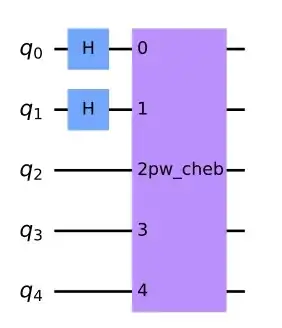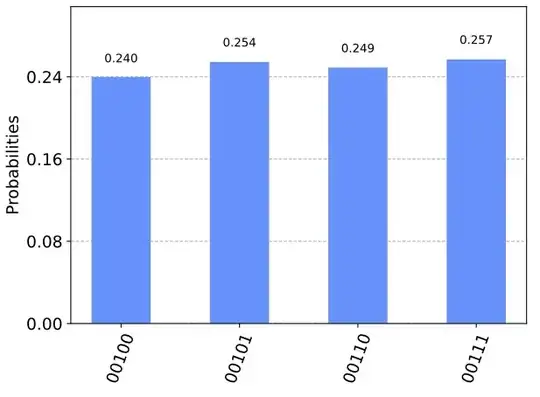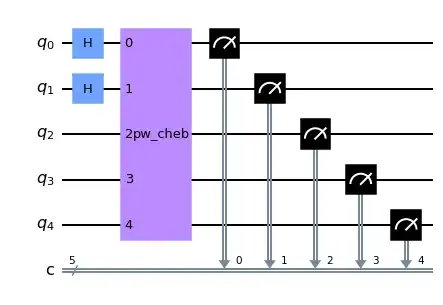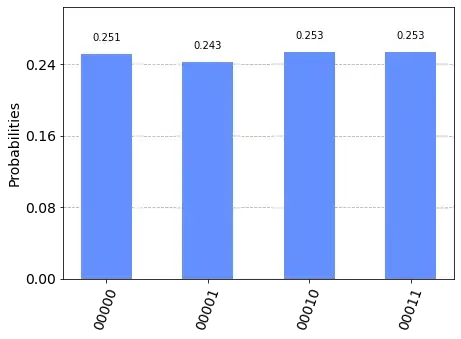This question follows the post https://quantumcomputing.stackexchange.com/posts/15070/.
I am working on an implementation of HHL algorithm, to do so, I need to map $|\lambda\rangle\mapsto |\arcsin(\frac{C}{\lambda})\rangle$, where $|\arcsin(\frac{C}{\lambda})\rangle$ is a binary representation $\arcsin(\frac{C}{\lambda})$ with $m$ qubits.
Recently, a circuit implementing a Piecewise Chebyshev approximation of a given function $f$ was implemented in Qiskit, documentation can be found here : https://qiskit.org/documentation/stubs/qiskit.circuit.library.PiecewiseChebyshev.html#qiskit-circuit-library-piecewisechebyshev.
I was working on the given example:
import numpy as np
from qiskit import QuantumCircuit
from qiskit.circuit.library.arithmetic.piecewise_chebyshev import PiecewiseChebyshev
f_x, degree, breakpoints, num_state_qubits = lambda x: 0, 2, None, 2
pw_approximation = PiecewiseChebyshev(f_x, degree, breakpoints, num_state_qubits)
pw_approximation._build()
qc = QuantumCircuit(pw_approximation.num_qubits)
qc.h(list(range(num_state_qubits)))
qc.append(pw_approximation.to_instruction(), qc.qubits)
qc.draw(output='mpl')
which should implement a piecewise approximation of the zero function on two qubits ... We can take a look of what the circuit looks like:
the first and second qubits are state qubits and I guess that the three others are ancillary qubits.
The initial state of the system is set to $\frac{1}{2} (|00\rangle+|01\rangle+|10\rangle+|11\rangle)$ so we may look at all possible results of the approximation.
But while looking at measurements of the output qubits, I am facing weird results:
The third qubit is set to one, while the two first are unchanged. I tried a lot of different functions to understand how one can interpret the resulting qubits, but I still cannot figure out what the circuit does. Does anyone have an idea ?



